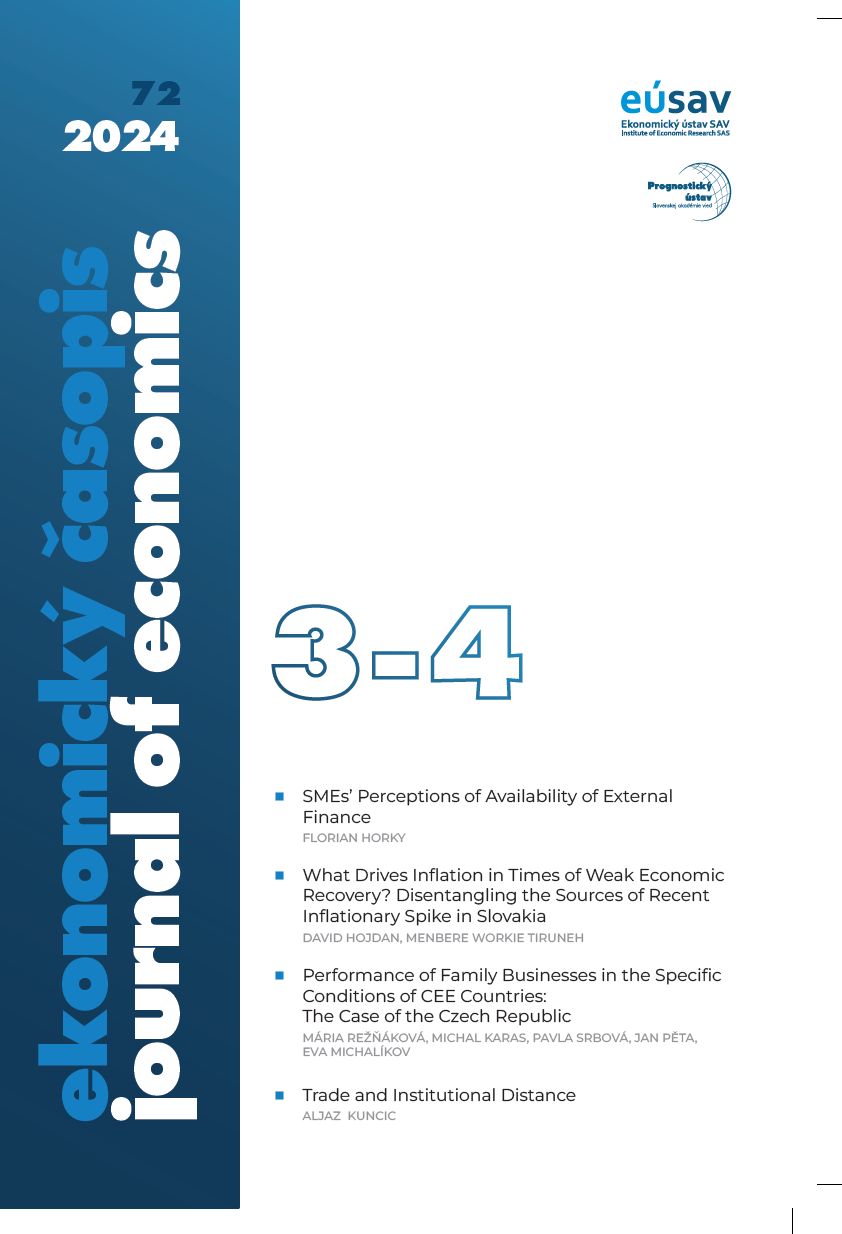What Drives Inflation in Times of Weak Economic Recovery? Disentangling the Sources of Recent Inflationary Spike in Slovakia
DOI:
https://doi.org/10.31577/ekoncas.2024.03-04.02Keywords:
inflation, inflation decomposition, cost-push, demand-pull, energy crisis, input-output analysisAbstract
In contrast to the pre-Covid-19 pandemic and post-Great Recession periods, when a significant part of mainly advanced economies experienced a low-growth, low-inflation macroeconomic landscape, the post-Covid-19 pandemic period has seen a dramatic shift, with notable increases in the inflation rate while economic growth has remained largely sluggish. In this study, we estimate the underlying causes of the recent inflation spikes and quantify the contributions of individual factors such as production costs, imported consumption and corporate profits to consumer price inflation in Slovakia over the period 2021 – 2023. This is done by using the methodology of the adjusted input-output (IO) price model, which was adopted from Dhingra (2023). The results suggest that excessive corporate markups and profits, input prices and imported inflation have played the most profound role in the overall rising trend of consumer price inflation in the recent period.
Downloads
Published
Issue
Section
License
Copyright (c) 2024 David Hojdan, Menbere WORKIE TIRUNEH

This work is licensed under a Creative Commons Attribution-NonCommercial-NoDerivatives 4.0 International License.


